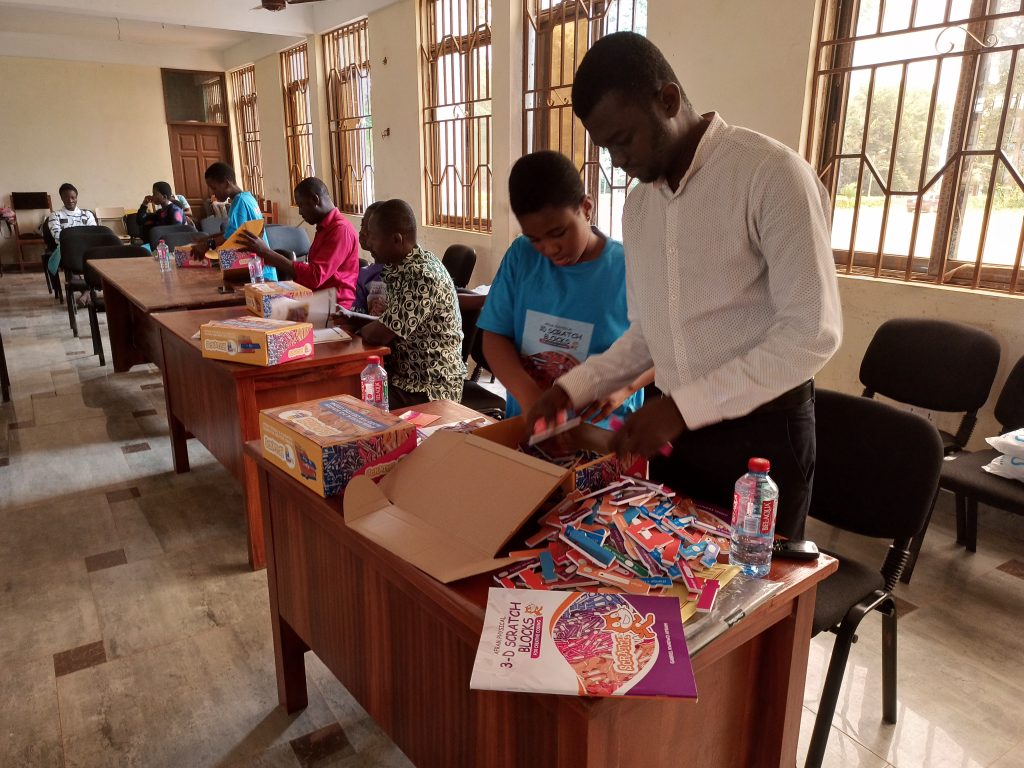By Benjamin Akoto
Sunyani, Sept. 12, GNA – In a pioneering effort to promote creative coding, 11 schools in Sunyani have successfully participated in the pilot programme for the development of Equitable Creative Coding Resources (ECCRs).
The purpose of the demonstration was to test the effectiveness of Physical 3D Scratch blocks for creative coding developed by Mr Gabriel Kwadwo Afram, an Information and Communication Technology (ICT) teacher at SUSEC, who received a grant of US$15,000 from the Scratch Foundation, a renowned non-profit organisation based in the United States.
The grant was awarded to develop scratch blocks for creative coding as part of the Scratch Education Collaborative (SEC) 2022-2024 Cohort.
The funding was instrumental in supporting the creation of prototypes of these blocks, which included tactile sprites and backdrops that could be manipulated during hands-on creative learning activities, and the blocks were made using locally sourced materials.
The Scratch Foundation is dedicated to equipping young people with the necessary digital tools and opportunities to imagine, create and share ideas through coding.
The participating schools selected from the Sunyani and Sunyani West Municipalities were Sunyani Senior High School (SUSEC), SUSEC Model School, Nyamaa Basic School and Sacred Heart Basic School.
The rest were Ridge Experimental ‘C’ Basic School, Yawhima African Faith Basic School, Abesim Presbyterian ‘B’ Basic School, Fiapre Presbyterian Basic School, Police Experimental Primary School, and Holy Spirit Basic School.
In an interview with the Ghana News Agency in Sunyani, Mr Afram expressed satisfaction with the demonstration exercise conducted by the participating schools and commended the students for showcasing innovative ideas by utilizing coding blocks.
He said the students demonstrated their ability to create simple games, such as making a spirit bounce and turn around, as well as walk from one end to another and praised those creative ideas.

Mr Afram said when combined, students could develop their own games or animations.
He emphasised the physical scratch blocks were specifically designed to enable schools and students in marginalised communities where computers, electricity and internet access might be limited to engage in computer programming and learn its fundamentals.
He explained plans to establish Scratch programming clubs in selected schools, saying with the aid of scratch blocks, even in the absence of computers, students could still cultivate creativity, logical reasoning and problem-solving skills.
He stated they would collaborate with the teachers and gather feedback from them, saying based on that feedback, the designs would be refined by making necessary additions or deletions to ensure perfection.
The schools, he said, would participate in a second pilot to demonstrate and share the ideas they had developed with their colleagues and the final product would be sent to the Scratch Foundation.
Mr Christian Nii Martey, an ICT teacher at Ridge Experimental ‘C’ Basic School said comparing the scratch coding with the new curriculum, it encompassed everything necessary for students to enhance their learning abilities in ICT.
He therefore recommended that policy makers in the education sector adopt a paradigm shift in the ICT curriculum that would provide students with the essential tools required to facilitate their study of the subject.
Mr Martey underscored the importance of students having access to various programming languages and basic software in their ICT studies and advocated students in under-privileged areas not to be excluded from the study of ICT in this modern era.
In a related interview, Ms Lisa Bachan, a class three pupil at Holy Spirit School lauded how the demonstration had been an eye opener for students to code and develop ideas even without computers because of the use of scratch blocks.
Similarly, Yeboah Fidelis, a class four pupil at Abesim Presbyterian Primary ‘B’ School shared his excitement on creating an object that could speak for three seconds using code blocks and described the experience as “truly amazing”.
GNA